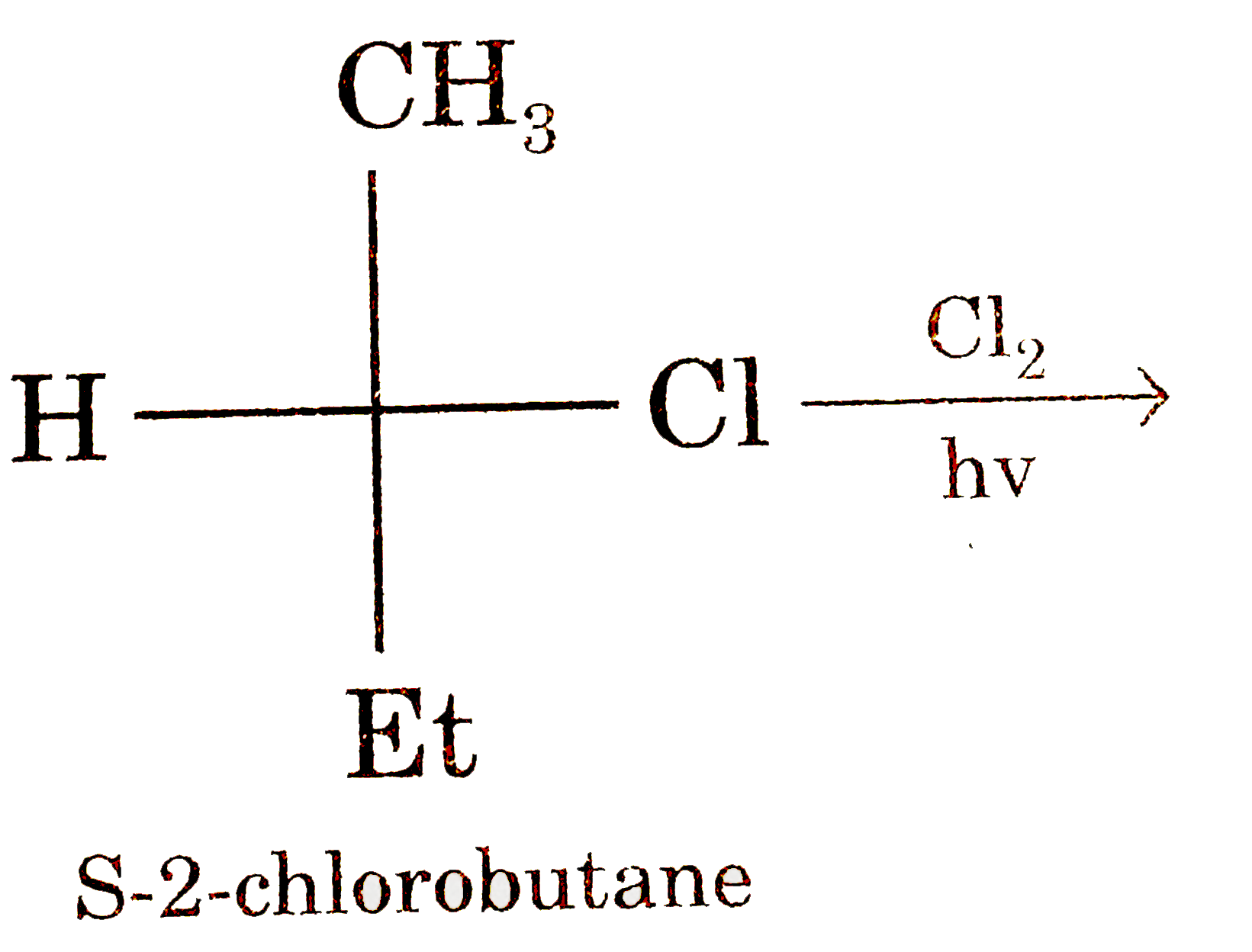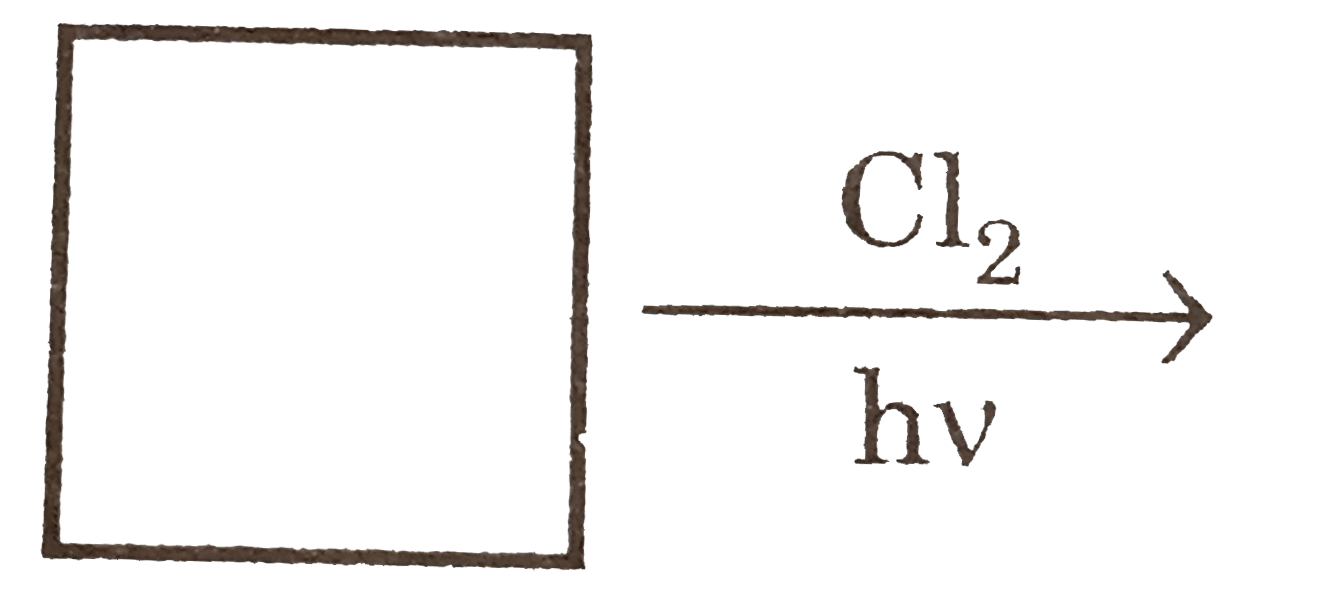When either enantiomer of 3-chloro-l-butene ((R) or (S)] is subjected to hydrolysis, the products of the reaction are optically inactive. Explain these results.
The solvolysis reaction is S1N . The intermediate allylic cation is achiral and therefore reacts with water to give the enantiomeric 3-buten-2-ols in equal amounts and to give some of the achiral 2-buten-1-ol:

Topper's Solved these Questions
- REACTION OF AROMATIC COMPOUNDS BOOK - MS CHOUHANCHAPTER - REACTION OF AROMATIC COMPOUNDS EXERCISE - ADDITIONAL OBJECTIVE QUESTIONS (SINGLE CORRECT CHOICE TYPE)
9 Videos
- REACTION OF AROMATIC COMPOUNDS BOOK - MS CHOUHANCHAPTER - REACTION OF AROMATIC COMPOUNDS EXERCISE - ADDITIONAL OBJECTIVE QUESTIONS (MULTIPLE CORRECT CHOICE TYPE)
2 Videos
- RADICAL REACTIONSBOOK - MS CHOUHANCHAPTER - RADICAL REACTIONSEXERCISE - Additional Objective Questions (Matrix Match Type)
6 Videos
- REACTIONS OF NITRENE AND ELECTRON DEFICIENT OXYGEN BOOK - MS CHOUHANCHAPTER - REACTIONS OF NITRENE AND ELECTRON DEFICIENT OXYGEN EXERCISE - ADDITIONAL OBJECTIVE QUESTIONS (Single Correct Choice Type)
5 Videos
Similar Questions
Knowledge Check
The reaction of CH3Mgl with acetone and hydrolysis of the resulting product gives :
ACH3CH2CH2OHBCH3CH2CH2CH2OHC(CH3)2CHOHD(CH3)3COH
The reaction of CH3Mgl with acetone and hydrolysis of the resulting product gives :
View SolutionReaction-1 : CH3−CH2−CH2−CH2−CH3Cl2−−−−−→hv Optically active monochloro products (s) are (R) .
Reaction-2 : Optically active di-chloro products (s) are (S).
Optically active di-chloro products (s) are (S).
Reaction-3 :
Optically active di-chloro product (s) are (P).
Reaction-4 : 2-methoxy propaneCl2−−−−−→hv Optically active monochloro product (s) are (Q).
What is the sum of P+Q+R+S?
View SolutionWrite the structures of major and minor products formed when 3-chloro-2-methylpentane is subjected to dehydrohalogenation.
View SolutionWhen 1-Bromo-1-methylcyclohexane is heated in ethanol for an extended period of time, three products result : one either and two alkenes . Predict the products of this reaction, and propose mechanism for their formation.Also, mention the major elimination product.
View SolutionExplain the following facts : Treating (Z) -2-butene withOsO4 in pyridine and then NaHSO3 in water give a diol that is optically inactive and cannot be resolved Treating (E) -2-butene with the same reagents gives a diol that is optically inactive but can be resolved into enantiomers.
View SolutionState whether the following statements are true or false.
a. D and L stereoisomers are enantiomers.
b. D enantiomer rotates the plane-polarised light to the right and L enantiomer to the left.
c. Conversion of an erythro to a threo stereoisomer always occur by inversion at one chiral C.
d. A racemate can be distinguished from a meso or a chiral compound by an attempted resolution.
e. Racemisation of an enantiomer can only occure by breaking of at least one bond to the chiral centre.
f. A reaction catalysed by an enzyme always gives an O.A product.
g. When an achiral molecule reacts to give achiral molecule, the product is always racemic
h. In chemical reactions, the change from an S reactant to an R product always signals an inversion of configuraion.
i. An optically inactive substance must be achiral.
j. An achiral compound can have chiral centres.
K. A compound with S configuration is the (−) enantiomer.
View SolutionWhen benzene reacts with l-chloro-2,2-dimethylpropane (neopentyl chloride) in the presence of aluminum chloride, the major product is 2-methyl-2-phenylbutane, not 2,2-dimethyl-1-phenylpropane (neopentylbenzene). Explain this result.
View Solution
